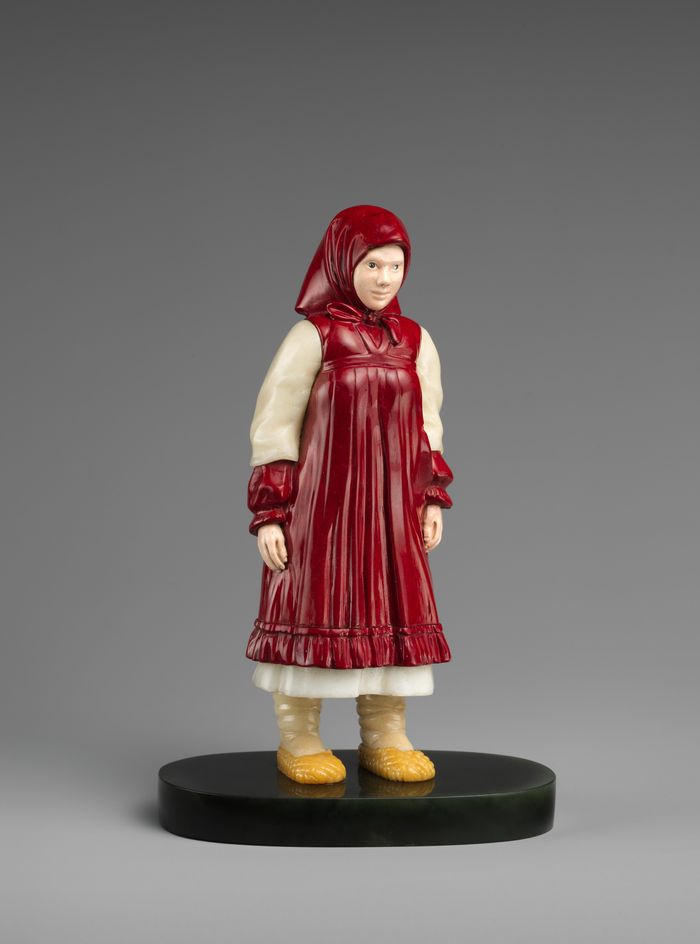
Russian peasant girl
Peter Carl Fabergé
An item at Metropolitan Museum of Art
This figurine is an exceptionally rare extant example of a Russian folkloristic figure composed of Siberian hardstones and purpurine. The deep crimson material known as purpurine was a variety of a similar chemically made glass known in the eighteenth-century workshops of Murano, near Venice. The manufacture of purpurine would appear to have been brought about by the crystallization of a lead chromate in a glass matrix, resulting in an extremely durable material of great beauty, on account of both the intensity and the unique depth of its sang-de-boeuf color. The House of Fabergé seems to have had the exclusive use of this remarkable material. The mark C. FABERGÉ, inscribed in English, indicates that the object was destined for the firm's shop in London.
European Sculpture and Decorative Arts
An exhibit at Metropolitan Museum of Art
The fifty thousand objects in the Museum's comprehensive and historically important collection of European sculpture and decorative arts reflect the development of a number of art forms in Western European countries from the early fifteenth through the early twentieth century. The holdings include sculpture in many sizes and media, woodwork and furniture, ceramics and glass, metalwork and jewelry, horological and mathematical instruments, and tapestries and textiles. Ceramics made in Asia for export to European markets and sculpture and decorative arts produced in Latin America during this period are also included among these works.




